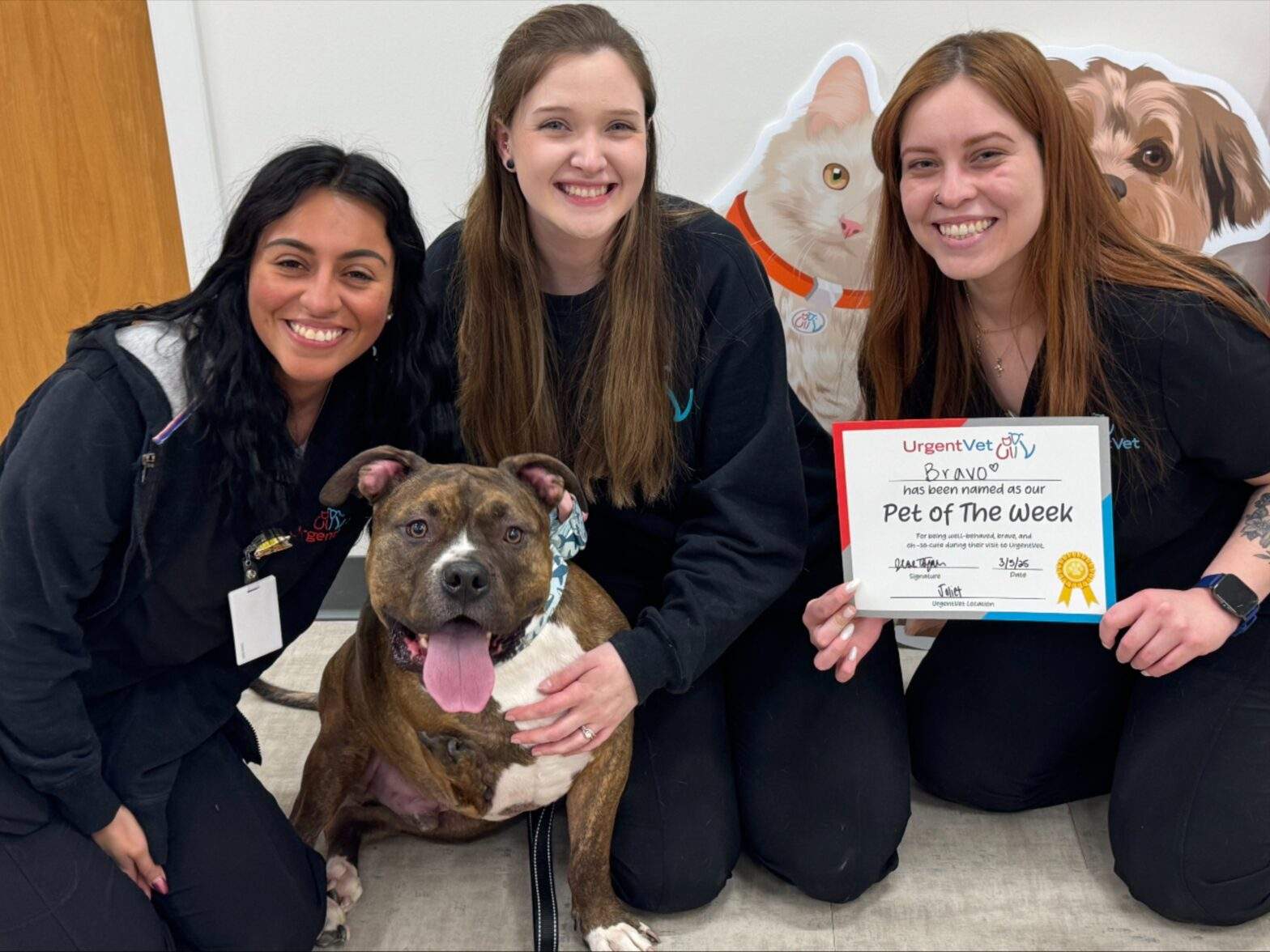When your pet isn’t themselves, you want to find out what’s wrong and help them on the road to recovery. At UrgentVet clinics, our veterinary teams work hard behind the scenes to discover what’s ailing your pet and develop an effective treatment plan. Veterinary diagnostics are a crucial step in this process.
How Veterinary Diagnostics Guide Your Pet’s Care
Advanced diagnostic tools, such as X-rays, ultrasound, and in-house blood work, provide rapid test results that enable informed decisions without the wait. Whatever your pet’s reason for an urgent care visit, veterinary diagnostics provide the information needed for a quick recovery.
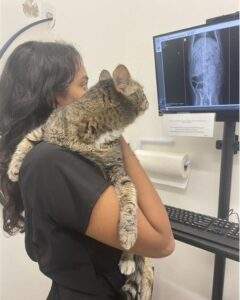
Here’s a look behind the scenes at the UrgentVet process and the role of diagnostic testing in helping your pet feel better.
Understanding Your Pet’s Symptoms
Every urgent care visit starts with a history. As you tell us what’s changed at home, we’ll ask questions to hone in on the possible culprits. From there, our team performs a physical exam and reviews your pet’s relevant medical history.
Sometimes, we can diagnose the problem based solely on a history and physical exam. Other times, there may be multiple possible causes for your pet’s symptoms. To narrow down this list and get a complete picture of your pet’s condition, we use veterinary diagnostics to look beneath the surface.
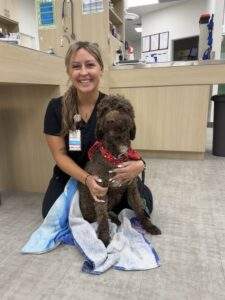
Leveraging On-Site Veterinary Diagnostics
Urgent care veterinarians use a combination of lab tests and imaging to evaluate your pet’s health in real time. In-house veterinary diagnostic testing enables the care team to act quickly. Our team will choose which veterinary diagnostics are needed based on your pet’s needs. Here are the tools with the highest impact, and when we reach for them.
Pet Blood Work
Blood tests provide critical information in a variety of cases. Pet blood work and in-house laboratory testing typically includes two components: a complete blood count (CBC) to assess the immune system and blood cell counts, and a blood chemistry panel to evaluate the function of internal organs, such as the liver and kidneys.
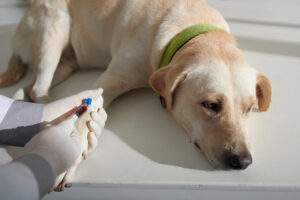
Pet Urinalysis & Fecal Testing
Urinalysis helps us directly evaluate urinary tract health to rule out issues like infections or crystals. It also helps us check for dehydration and assess kidney function, especially when interpreted in light of blood tests. Fecal testing helps us detect parasites, bacteria, and certain infections, such as parvovirus.
Veterinary Digital Imaging & X-Rays
Sometimes, we need to look at your pet’s internal body structures. To achieve this in a non-invasive way, we use veterinary digital imaging tools like X-rays and ultrasound, which can provide incredibly valuable information.
Digital X-rays provide a two-dimensional, static view of organs, bones, and other tissues, while ultrasound imaging provides a three-dimensional, dynamic view of organs and blood flow. X-rays are ideal for examining bones and viewing the entire chest or abdominal cavity, while ultrasound is ideal for examining organs from various angles or collecting samples through a needle.
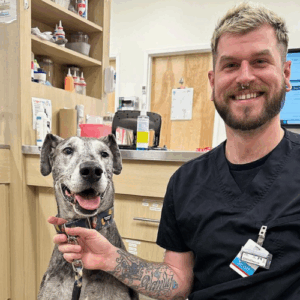
Sometimes, we use both imaging tests together to gain a better understanding of your pet’s condition.
Interpreting Test Results and Creating a Plan
Once we have veterinary test results, we interpret them in the context of your pet’s symptoms, physical exam findings, and history. Armed with more information, we discuss the results and our recommendations for treatment or further testing. We offer several veterinary treatment options, allowing you to select the one that best suits your specific situation.
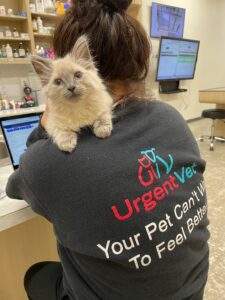
Veterinary diagnostic test results help us target therapies for better health and wellness outcomes by ruling certain conditions in or out. Even without a definitive diagnosis, these clues can point us in the right direction and help us make safer, more effective treatment recommendations.
Faster answers, better care
Pet emergencies and urgent health problems don’t follow a schedule. When your pet shows signs of an illness or injury, fast answers can mean a faster recovery.
UrgentVet clinics use in-house veterinary diagnostics to personalize your pet’s diagnosis and care. You don’t have to wait days for answers—with our in-house diagnostic capabilities, we can quickly assess your pet’s condition and provide the information you need to make the best treatment choice.
Contact us to find an UrgentVet location near you – because your pet can’t wait to feel better.
Diagnostic test results help us target therapies for better health and wellness outcomes by ruling certain conditions in or out. Even without a definitive diagnosis, these clues can point us in the right direction and help us make safer, more effective treatment recommendations.

